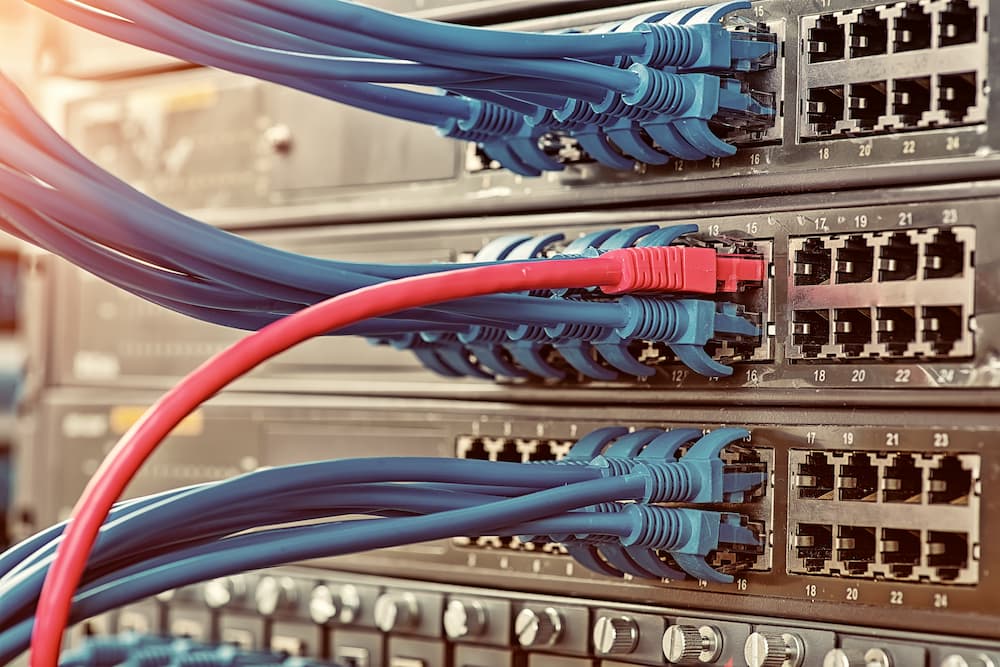
Understanding Network Infrastructures
In today’s interconnected world, network infrastructure is a critical component that enables communication and information exchange between devices and systems. It can be described as the foundation or backbone of a computer network, consisting of various hardware and software components that work together to ensure that data flows smoothly and securely across the network.
However, for those who are not familiar with the technical jargon, understanding the concept of network infrastructure can be confusing. That’s why Newport Network Solutions Inc. has stepped in to help clients build out their infrastructure in a secure and reliable way. Their expertise and experience in this area make them the go-to company for anyone looking to improve their network infrastructure.
We’ll delve into network infrastructure basics, covering the fundamental components and their roles in ensuring a robust and efficient network. By the end of this post, you’ll better understand network infrastructures and their importance in today’s digital landscape.
What is Network Infrastructure?
You’re operating over a network when you use one computer to talk to another. This network, such as the internet, can be worldwide or much more localized. The network infrastructure is the collection of hardware and software components that work together to make sure the devices can communicate with one another.
Benefits of Having a Network Infrastructure
Trying to get by without network infrastructure in place is nearly impossible in the modern workplace — some of the many benefits provided by the technology include:
- Increased Connectivity: Being connected to a network allows devices to communicate with one another. Through this communication, they can more easily share resources such as printers, files, and applications.
- Improved Communication: When employees can easily share files from one computer to another, they can collaborate and work together more efficiently.
- Centralized Management: Without a network, whoever handles your IT tasks must work with each computer individually. With a network, several important tasks can be completed simultaneously using central management tools.
- Cost Savings: This centralized management will save the IT staff time and the company money as a result.
Understanding Network Infrastructure Components
Many hardware and software components go into making a network function. Some of the broad categories of these components comprise of:
Wired Devices
These are the standalone devices that provide connectivity to the network. They include routers, switches, hubs, and modems. These are used by other devices on the network to communicate with one another or connect to the internet.
Network Cabling
Most user-facing devices connect to the network wirelessly now, but there are still a lot of components behind the scenes that rely on wires to get their jobs done. For these devices, copper or fiber optic cabling is used to make the connections.
Network Interface Cards
Computing devices need special hardware in order to connect to the network. These hardware components are called Network interface cards (NICs). These days, most devices come with built-in NICs.
Wireless Access Points
Most devices connect wirelessly to the network. Wireless access points (WAPs) provide these devices with the connection they need. These are often built into routers, which will take the wired signal from a modem and broadcast it wirelessly over Wi-Fi.
Network Security
Hardware isn’t the only part of a network infrastructure. Software plays a crucial role as well. The most important role for software to play is in security. Firewalls, as well as intrusion detection and prevention systems, make up this category. These components protect the network from unauthorized access and reduce the risk of security threats. Some of this software may run on specialized hardware.
Network Services
The glue that connects everything together is network services. This includes DNS servers to resolve hostnames, DHCP to configure hosts, NAT to translate network addresses, and more.
Other Software
It takes plenty of other software to make a network work. The most obvious is an operating system, without which nothing on the computer would be able to talk to anything else. Other networking-related software includes network management software and software used to monitor the network.
Different Types of Networks Infrastructures
There are various types of network infrastructures. The difference between them mostly boils down to the size of the area being connected. Some common ones include:
Local Area Network (LAN)
A LAN is a network designed to connect devices within a single building or a campus’s relatively small confines. LANs use a combination of ethernet cabling and wireless access points to connect devices.
Wide Area Network (WAN)
A WAN is designed to cover larger geographical areas than a LAN. This could be a city, region, or similarly sized area. WANs are typically connected using leased lines or internet connections and often rely on technologies such as VPNs (Virtual Private Networks) to provide secure connections between the various sites.
Metropolitan Area Network (MAN)
A MAN is a network that covers a metropolitan area, such as a city or town. MANs typically connect multiple LANs and may use technologies such as fiber optic cabling to provide high-speed connectivity.
Cloud-based Network Infrastructure
Like some WANs, a cloud-based infrastructure uses internet connectivity to make its connections. However, these connections are at a large scale. Virtual machines, load balancers, firewalls, and VPNs can all be used to separate and secure devices on the network from typical internet traffic.
Invest in an Effective Network Infrastructure Solution from Newport Network Solutions
When building out your own network, simply knowing the answer to “What is network infrastructure?” isn’t enough. You need someone who knows how to design a secure network infrastructure. Misconnecting computers can result in a range of cybersecurity threats. If not done correctly, you’ll also have slower speeds than you’d normally see. To get a secure and reliable network infrastructure for your organization, contact Newport Network Solutions Inc. today.
Featured Image: asharkyu / Shutterstock
GET A QUOTE
"*" indicates required fields

